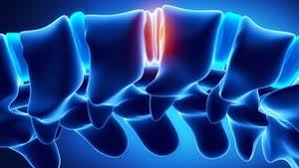
Breaking News
 Battleborn Batteries Responds! Their Overheating Device is a "Feature" not a "Problem
Battleborn Batteries Responds! Their Overheating Device is a "Feature" not a "Problem
 Actor Liam Neeson Outs Himself as MAHA After Narrating Pro-RFK Jr. Documentary Slamming...
Actor Liam Neeson Outs Himself as MAHA After Narrating Pro-RFK Jr. Documentary Slamming...
 Kyle Rittenhouse announced on social media Wednesday that he has tied the knot.
Kyle Rittenhouse announced on social media Wednesday that he has tied the knot.
 JUST IN: President Trump Grants Tina Peters Pardon
JUST IN: President Trump Grants Tina Peters Pardon
Top Tech News
 Build a Greenhouse HEATER that Lasts 10-15 DAYS!
Build a Greenhouse HEATER that Lasts 10-15 DAYS!
 Look at the genius idea he came up with using this tank that nobody wanted
Look at the genius idea he came up with using this tank that nobody wanted
 Latest Comet 3I Atlas Anomolies Like the Impossible 600,000 Mile Long Sunward Tail
Latest Comet 3I Atlas Anomolies Like the Impossible 600,000 Mile Long Sunward Tail
 Tesla Just Opened Its Biggest Supercharger Station Ever--And It's Powered By Solar And Batteries
Tesla Just Opened Its Biggest Supercharger Station Ever--And It's Powered By Solar And Batteries
 Your body already knows how to regrow limbs. We just haven't figured out how to turn it on yet.
Your body already knows how to regrow limbs. We just haven't figured out how to turn it on yet.
 We've wiretapped the gut-brain hotline to decode signals driving disease
We've wiretapped the gut-brain hotline to decode signals driving disease
 3D-printable concrete alternative hardens in three days, not four weeks
3D-printable concrete alternative hardens in three days, not four weeks
 Could satellite-beaming planes and airships make SpaceX's Starlink obsolete?
Could satellite-beaming planes and airships make SpaceX's Starlink obsolete?
Highly adhesive hydrogel sticks to the task of tissue regeneration

Scientists in Switzerland have now developed a new form of the material they say has unparalleled adhesive properties, a characteristic that could prove particularly useful in trying to repair cartilage and meniscus.
Unlike some other tissues in the human body, cartilage and meniscus have a negligible supply of blood, or none at all, and therefore won't regenerate on their own once damaged. Scientists have already looked to offer a helping hand by injecting hydrogels packed with different drugs into the damaged areas, but these tend to wash away due to the natural machinations of the human body and the flow of its fluids.
In a new study, scientists at Switzerland's École Polytechnique Fédérale de Lausanne describe a new kind of material they think can stick to the task. Their hydrogel is almost 90 percent water and includes of a web of cross-linked polyethylene glycol dimethacrylate together with cross-linked alginate, reinforced with nanofibrillated cellulose.
The resulting structure is claimed to be 10 times more adhesive than commercially available bioadhesives, and due to its high water content, bears a strong similarity to the natural tissues it is supposed to heal. But most importantly, it remains highly adhesive over time because the uniquely layered material absorbs the mechanical stresses that would otherwise wash it away.

 First totally synthetic human brain model has been realized
First totally synthetic human brain model has been realized Mach-23 potato gun to shoot satellites into space
Mach-23 potato gun to shoot satellites into space

